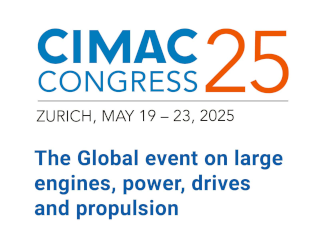The push for cleaner air and energy opens opportunities in segments like cruise ships and workboats as well as terminal equipment for battery maker Corvus Energy
The unused potential for battery applications on board cruise and passenger ferries is huge, says. Roger Rosvold, Vice President Sales[ds_preview] at Corvus Energy. »Batteries reduce fuel consumption and maintenance costs, cut pollution and, with increasing environmental regulations and requirements that will incur costs for air emissions, provide a very compelling business case,« he continues, adding, »The industry is just starting to understand the power of batteries.«
Corvus Energy has recently signed a contract with Norwegian Electric Systems (NES) for the marine world’s largest battery package to be installed on board Havila Kystruten’s coastal vessels. Corvus will deliver an air-cooled ESS with the patented single-cell thermal isolation, which exceeds class requirements, to ensure the highest level of safety. The Energy Storage System has a capacity per vessel of 6,100 kWh, which is double the capacity of any existing battery-operated ferry.
The newbuilds are part of Havila’s contract with Norwegian Ministry of Transport for the construction of four environmentally-friendly vessels to operate on the Bergen-Kirkenes coastal route from 2021. Two of the vessels will be built by Turkish shipbuilder Tersan and the remaining by Spanish Barreras. At a length of 125m and a width of 20m, the ships will have a hybrid gas-electric propulsion system with battery, where four gas-powered engines in each vessel run the generators. The system is also adapted to the next generation of technology, using hydrogen fuel cells.
One of Corvus’ latest projects is the supply of a 550 kWh Energy Storage System (ESS) for a new all-electric skimmer workboat. The ESS will allow the boat to be in full working mode for four to five hours, and a full battery charge will take just two hours. In addition, the vessel has solar panels on board. The vessel will be a replacement for the current litter skimmer boat Pelikan that has picked up about 1,500t of trash from the Oslo harbour water surface within its 30 service years.
The 12m long aluminum vessel will be built by Grovfjord Mek. Verksted (GMV), a shipyard that specializes in aluminum workboats and previously built the world’s first fully-electric fish farm boat. The boat will be powered by two electric propulsion engines and four electric side thrusters. The combination of deck equipment, manoeuvrability and energy storage will make this zero-emission skimmer workboat more efficient than the previous one. Delivery is expected in December 2019.
Roger Rosvold, Vice President Sales at Corvus Energy is clear in his predictions: »Electrifying workboats in harbours has only just begun. For example, the Navtek ZeeTUG zero-emissions all-electric tug will take to the water this spring to operate in Istanbul harbour. We are confident that we will see a massive shift from diesel to battery on all kinds of harbour-going vessels due to substantial benefits. Battery power reduces emissions, which are increasingly regulated in many ports and harbours. Moreover, batteries are safer and quieter for the crew, and save both fuel and maintenance costs for the owners.«
The battery use does not stop at the quay wall – and not in Northern Europe – but continues on shore at the terminal where Corvus is going to supply the energy storage system (ESS) for battery-hybrid RTG cranes by CCCC Shanghai Equipment Engineering (CCCCSEE). The order is for various retrofit and newbuild deliveries by its affiliate ZPMC in Chinese ports. Unlike conventional diesel electric port cranes, the hybrid version is powered primarily from the Corvus battery package resulting in fuel savings of up to 65%, according to the Canadian company. The added benefits of reduced operating costs, reduced greenhouse gas emissions and lower noise levels at the terminal make a very attractive business case.
The Orca Energy ESS stores regenerative braking energy captured as the RTG crane lowers a container – a high-current charge that most battery systems cannot sustain. The stored energy is used to power the RTG crane during operations such as trolley and gantry movement, allowing the diesel engine to be shut off when it would traditionally be idling or operating inefficiently at low loads. The size of the generator can be smaller, the generator can be used less often and its operation optimized for fuel efficiency.

















